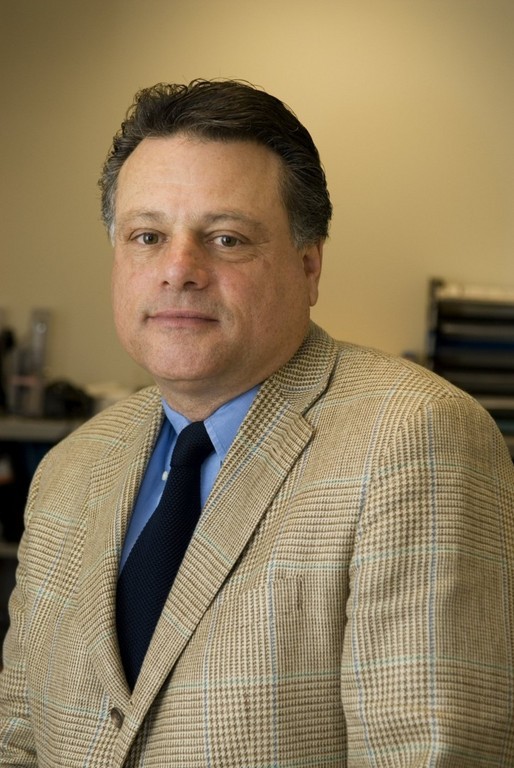
An orthopedic surgeon at Our Lady of Fatima Hospital has performed Rhode Island’s first resurfacing of an arthritic knee, introducing a less-invasive alternative to knee-replacement surgery for local residents.
For now, Fatima is the only hospital in the state to offer the procedure, but later this year, the surgeon, Dr. A. Robert Buonnano, plans to provide training to other surgeons who wish to try it. He spoke with Providence Business News about the patented technology, Arthrosurface.
PBN: What kinds of patients need knee-replacement surgery and how does it normally work?
BUONNANO: Articular cartilage is a smooth slippery surface that covers the end of all of our bones and allows our joints to move or articulate without pain or friction. When joints get arthritic we lose the cartilage, and in advanced arthritis, bone rubs against bone, and movement is painful. This is normally when we do a knee replacement. We replace the damaged bone and cartilage on both sides with implants that resemble the shape of the patient’s knee joint. The top portion is covered with a metal implant, and the bottom is covered with a plastic and metal plateau. The metal femur articulates against the plastic plateau to allow low-friction motion, and since we cover the exposed bone on both sides of the joint with implants, the arthritis pain usually goes away.
PBN: What led you to decide to try Arthrosurface?
BUONNANO: Implanting the Arthrosurface device is much smaller and less invasive than a joint-replacement surgery. As a result, patient recovery time is expected to be much quicker. I believe that for the patients diagnosed for the Arthrosurface implant, removing less bone is better. When we do a full-joint replacement, the patients are usually over 60, and they tend to be less active. In this case the patient was younger, very active, and the damage he had was less extensive. He only had missing cartilage in one side of his knee, and he wasn’t bone on bone. Instead, he had more of a lesion or cavity on both sides of his joint surface. The Arthrosurface technology allows the surgeon to just resurface the damaged area and leave the rest of the joint intact, which allows active patients to maintain their motion.
PBN: How does the technology work?
BUONNANO: Arthrosurface makes surface replacements that match the anatomy of the patient. Think of it like a filling for your tooth. The same way a dentist puts a filling in your tooth to fix a cavity, Arthrosurface puts an implant into your damaged joint surface to resurface the cartilage cavity in your joint. The system uses a 3-D mapping technology that allows the surgeon to figure out how large the defect is and what curvature the patient’s joint surface has. Because each Arthrosurface joint system has a family of implant curvatures and sizes, it allows the surgeon to essentially take an off-the-shelf implant and put it into the patient’s surface so it fits like a custom device. In traditional knee-replacement surgery we do it the other way around. We cut the bone first and then we fit the patient to the implant by performing a series of surgical bone and tissue adjustments.
PBN: When did you operate on this particular patient and what have the results been so far?
BUONNANO: This was a day surgery operation that we did this summer and the patient reported that he regained his motion and was pain-free within a few weeks. In a traditional joint replacement, we would keep the patient in the hospital for a few days, and rehab usually takes months.
PBN: Do you expect to be doing a lot of these procedures in the future?
BUONNANO: This new technology is intended for younger, active patients where the arthritic damage is limited to one half of the joint. I expect to do more of these procedures as time goes on, especially since more patients are presenting with early cartilage damage. Since they want to maintain their active lifestyles, they would rather fix the damage early rather than stop their activities until they are old enough to receive a joint replacement. In the future, I believe, this will become the new first-line treatment for early arthritis and in some cases this may be all they ever need. There are a lot of different kinds of arthritis so with time we will know which types of cartilage diseases will continue to progress and which ones may actually be arrested by implanting an anatomic prosthesis earlier in the disease process.
St. Joseph Health Services of Rhode Island – a Providence-based health care system that is associated with but not financed by the Roman Catholic Diocese of Providence – includes the St. Joseph Hospital for Specialty Care, Our Lady of Fatima Hospital, the St. Joseph Living Center, the St. Joseph School of Nursing and the Southern New England Rehabilitation Center. The health system and its divisions are JCAHO-accredited. Additional information is available at www.SaintJosephRI.com.












